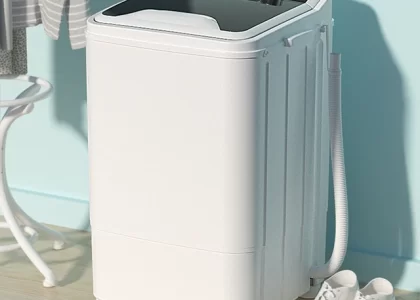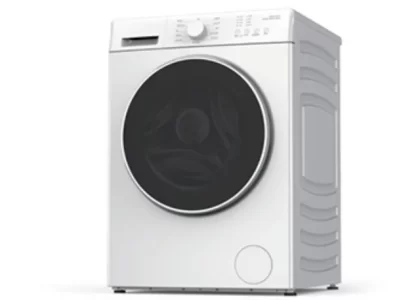 Introduction:
Introduction:
A leaking washing machine can be a frustrating problem that not only wastes water but also causes potential damage to your home. Understanding the common causes of a leaking washing machine and knowing how to address them is essential for proper maintenance and avoiding costly repairs. In this comprehensive guide, we will explore the reasons behind a leaking washing machine, troubleshooting steps, and preventive measures to keep your appliance in optimal condition.
 Several types of washing machines:
Several types of washing machines:
There are several types of washing machines available in the market. Here are the common types:
Top-loading washing machine:
This type of washing machine has a lid on the top and requires loading the clothes from the top. The agitator or impeller is usually found in the center of the drum and agitates the water and clothes for cleaning. Top-loading machines are generally more affordable and have faster washing cycles than front-loading machines.
Front-loading washing machine:
Front-loading machines have a door on the front through which clothes are loaded. The drum rotates horizontally and lifts the clothes up and drops them back down repeatedly, known as tumbling action. Front-loading machines are known for their efficiency, gentler wash cycles, and better water and energy-saving capabilities. They are usually more expensive than top-loading machines.
Semi-automatic washing machine:
Semi-automatic machines have separate tubs for washing and rinsing. The washing tub requires manual intervention to transfer clothes from the washing tub to the rinsing tub. These machines are less automated but come at a lower price point compared to fully automatic machines. They are popular in regions with water scarcity or inconsistent water supply.
Identifying the Cause of the Leak
Overloading:
Overloading the washing machine with excessive laundry can cause water to overflow and leak out.
Ensure you are following the manufacturer’s recommended load capacity.
Damaged Hoses:
Inspect the hoses connected to the washing machine for any cracks, leaks, or loose connections.
Damaged hoses can lead to water leakage during the wash or drain cycles.
Faulty Water Inlet Valve:
The water inlet valve supplies water to the washing machine.
A malfunctioning inlet valve can cause leaks due to worn-out seals or valve failures.
Clogged Drain:
A clogged or blocked drain pipe prevents water from properly draining out of the washing machine.
The water can back up and leak from the machine.
 Troubleshooting Steps
Troubleshooting Steps
Check Hose Connections:
Ensure that the hoses connecting the washing machine to the water supply are tightly connected.
Replace any damaged or worn-out hoses to prevent leaks.
Inspect the Water Inlet Valve:
Examine the water inlet valve for any signs of damage or malfunction.
If necessary, replace the valve or its components to address the leak.
Clear Clogged Drains:
Use a drain snake or a pipe-cleaning tool to clear any clogs or blockages in the drain pipe connected to the washing machine.
Regularly clean lint filters or debris traps to prevent buildup.
Level the Machine:
Check if the washing machine is level by using a bubble level.
Proper leveling ensures that the machine operates smoothly and doesn’t cause water to leak.
Preventive Measures
Regular Maintenance:
Follow the manufacturer’s maintenance guidelines, including cleaning filters, checking hoses, and inspecting seals.
Regular maintenance reduces the likelihood of leaks.
Avoid Overloading:
Follow the recommended load capacity to prevent excessive strain on the machine.
Overloading can lead to unbalanced loads and leaks.
Use Proper Detergents:
Use detergents specifically designed for washing machines.
Using excessive detergent or the wrong type can cause excess suds and overflow, leading to leaks.
Replace Worn-out Parts:
Regularly inspect and replace worn-out seals, gaskets, or pump components.
Damaged parts can contribute to leaks and should be addressed promptly.
In addtion, resetting the washing machine is not a solution for fixing a leaking issue. Resetting generally refers to restarting or rebooting the machine to resolve any minor glitches or errors in the system. It is not designed to address physical issues like water leakage.
 If your washing machine is not spinning after experiencing a water leak:
If your washing machine is not spinning after experiencing a water leak:
If your washing machine is not spinning after experiencing a water leak, there are a few steps you can take to troubleshoot the issue:
Unplug the machine:
Start by unplugging the washing machine from the power source to ensure your safety during the troubleshooting process.
Check for visible damage:
Inspect the machine for any visible damage that may have occurred during the water leak. Look for broken parts, loose connections, or anything that seems out of place. If you notice any damage, it may be best to call a professional for repairs.
Check the lid or door switch:
If you have a top-loading machine, the lid switch may need to be checked. Make sure the lid is securely closed, as some models have a safety mechanism that prevents spinning if the lid is not properly closed. For front-loading machines, ensure that the door is fully closed and latched.
Restart the machine:
Sometimes, issues can be resolved by simply restarting the machine. Plug in the washing machine and try turning it on again. Check if it starts spinning after restarting.
Check the load balance:
An unbalanced load can prevent the machine from spinning. Open the machine and redistribute the laundry evenly in the drum. Make sure there are no heavy or bulky items grouped together, as this can cause an imbalance.
Examine the motor or drive belt:
A malfunctioning motor or a broken drive belt can also cause the machine to stop spinning. If you are comfortable doing so, you can try inspecting these components for any visible issues. However, it is recommended to consult a professional technician for motor or belt repairs as they may require specialized knowledge and tools.
If the problem persists after attempting these steps, it is best to contact a qualified technician or the manufacturer’s customer support for further assistance. They will be able to diagnose and repair the issue more accurately and safely.
 Conclusion:
Conclusion:
Dealing with a leaking washing machine requires identifying the cause and taking appropriate action to resolve the problem. By understanding the common reasons behind a leaky washing machine, you can troubleshoot the issue effectively. Whether it’s checking hose connections, inspecting the water inlet valve, clearing clogged drains, or leveling the machine, taking proactive measures can prevent leaks. Additionally, regular maintenance, avoiding overloading, using proper detergents, and replacing worn-out parts are necessary for preventing future leaks. By following the guidance provided in this comprehensive guide, you can tackle a leaking washing machine, maintain its optimal function, and ensure a hassle-free laundry experience while preserving the condition of your home.




